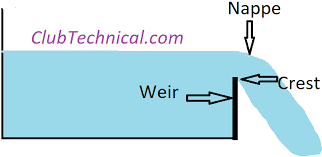Geocell In Road Construction Types Advantages Disadvantages
What Are Geocells?
Geocells
are three-dimensional, expandable panels made of high-density polyethylene
(HDPE), polyester, or other polymeric material. During installation, the
interconnected strips expand to form flexible, three-dimensional cellular
structural walls where backfill materials such as sand, earth, stone, etc., are
placed and compacted.
It
creates a free-drainage system that holds the filling materials and prevents
movement by providing traction through tensile reinforcement. Geocells thus
improve the structural and functional behavior of soil and aggregate filling
material.
Did
You Know?
Geocell
was first developed in the late 1970s and early 1980s by presto geosystems.
Typical geocells for geosynthetics are made using ultrasonically welded HDPE
strips and expanded on-site to form a honeycomb structure filled with materials
such as sand, earth, stone, etc.
Geosynthetics
is simply a synthetic product used to stabilize the soil. The main purpose
of using geocells in road construction is to control erosion and soil stabilization,
channel protection, and structural reinforcement for load support and earth
retention.
Different Types Of
Geocell
Geocells
come in different types and specifications that solve various problems in
different soil types. Geocells are mainly categorized into two types:
1.
Perforated geocell,
2.
Non-perforated geocell.
1. Perforated
Geocell
Perforated
geocells have uniform holes in the cell walls that improve stress distribution
and reduce deformation. This is done through a large number of edges that turn
into cells. The integrity of the geocell depends on the strength of the
perforated strip and weld.
Tensile
strength and seam weld strength of geocell is determined by a tensile testing
machine. The weld strength of the strip must be equal to or greater than the
tensile strength of the strip itself.
2. Non-Perforated Geocell
Non-perforated
geocells have thick, smooth walls. It is usually a polymer sheet with a
three-dimensional mesh structure with a rivet link or ultrasonic welding.
How Does Geocell Work
In Road Construction?
Generally,
unpaved roads are often built on unstable soils, such as wide clay, peat bogs,
or sand. If these roads are not built with the right technology, then there is
a chance that these materials will crumble and threaten road stability.
Geocells provide the solid
stiffness and creep resistance needed to reinforce soft soils. They prevent the
shrinking and cracking of the clay, facilitate lateral dispersion and
filtration of sandy soils, and strengthen the subsoil in all soft soils.
Road
maintenance with cellular restraint systems keeps them in the right conditions.
Roads can have maintenance problems due to unsuitable underground conditions (due
to inappropriate characteristics of subsoil), which can lead to damage,
cracking, washing out, and settlement of unpaved surfaces.
By
using geocells permanent and temporary roads can be constructed, and their
ground stability condition can be improved. Geocell improves the load-bearing
capacity of granular pavements and porous surfaces used in heavy machines, are
and, at the same time, reduces costs.
The
system reduces the amount of water on the surface and replenishes groundwater
supplies. In addition, the traffic or parking lot can be covered with plants or
small weeds, which is a beneficial solution for saving space.
No
equipment is required to expand the geocell sections, which simplifies
installation because the cells can be placed in the softest substrates, and no
low-pressure equipment is required for filling. Fully loaded dump trucks can
easily unload cargo and disperse granular material inside and on the geocell.
Advantages of Geocell In Road construction
Following
are the advantages of geocells in road construction:
·
Available in a variety of cell sizes, depths,
section lengths, and facade colors to suit the project’s needs.
·
Geocell gives strong protection to the
impervious layer.
·
It Provides significant subclass deformation
without loss of structural integrity.
·
Transportation and installation of geocell
are easy.
·
High resistance to tensile stress, tearing,
punching, fatigue.
·
Geocell is an environmentally friendly
material.
·
Geocells are lightweight, cheap, and have
high durability.
·
Compared to other products, the use of
geocell is very economical.
·
They increase the reliability of the
structure and structure’s life span.
·
They help to form embankments on poor
load-bearing soil.
·
They help to form earth retention walls and
soil sound-absorbing structures.
Disadvantages of Geocells In Road
construction
Following
are the disadvantages of geocells in road construction:
• The long-term
performance of the specifically formulated resin used to make the geocell must
be guaranteed by using suitable additives, including antioxidants, ultraviolet
filters, and fillers.
• Management,
storage, and installation must be guaranteed by careful quality control and
quality assurance.
Conclusion
Geocell
has excellent potential to be used as a cost-effective solution to many
technical problems. Modern construction methods also extend the application of
a geocell-reinforced soil retaining wall, which includes new cladding elements,
reduces construction time and costs, and allow better aesthetic conditions for
the final structure. Generally, geocell is widely used in many environmental projects.







Comments
Post a Comment